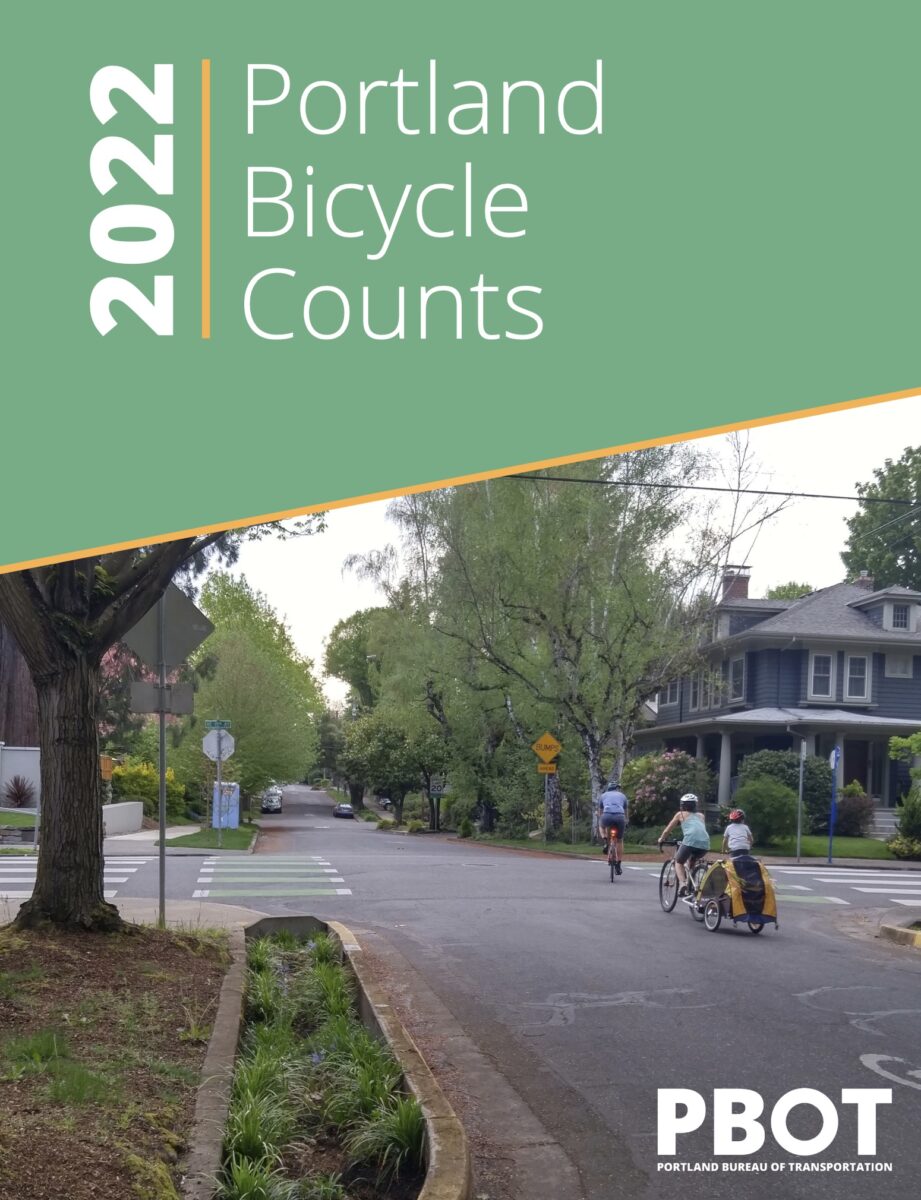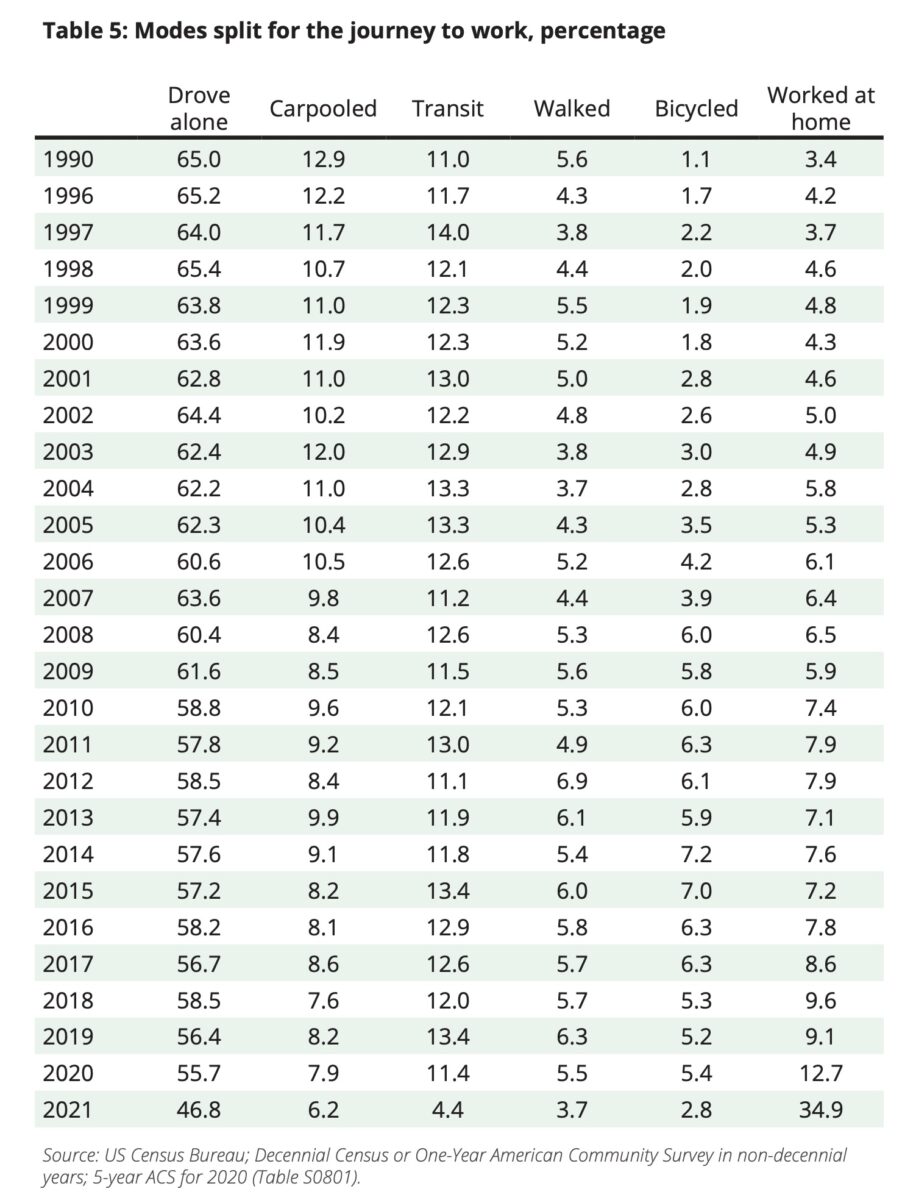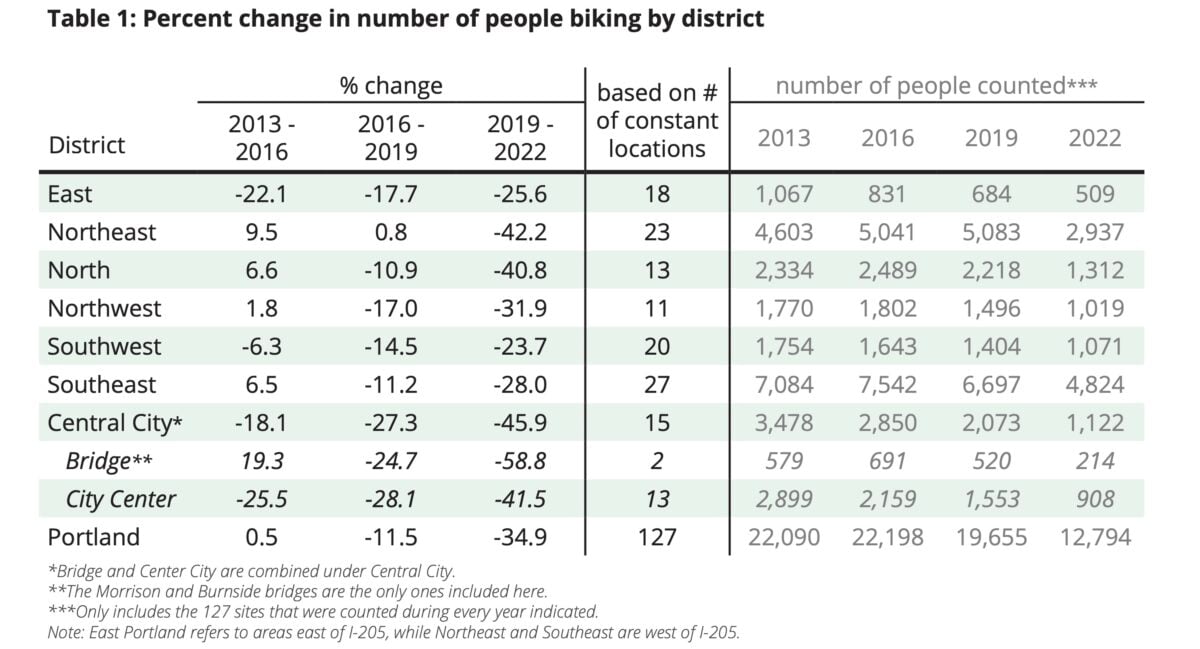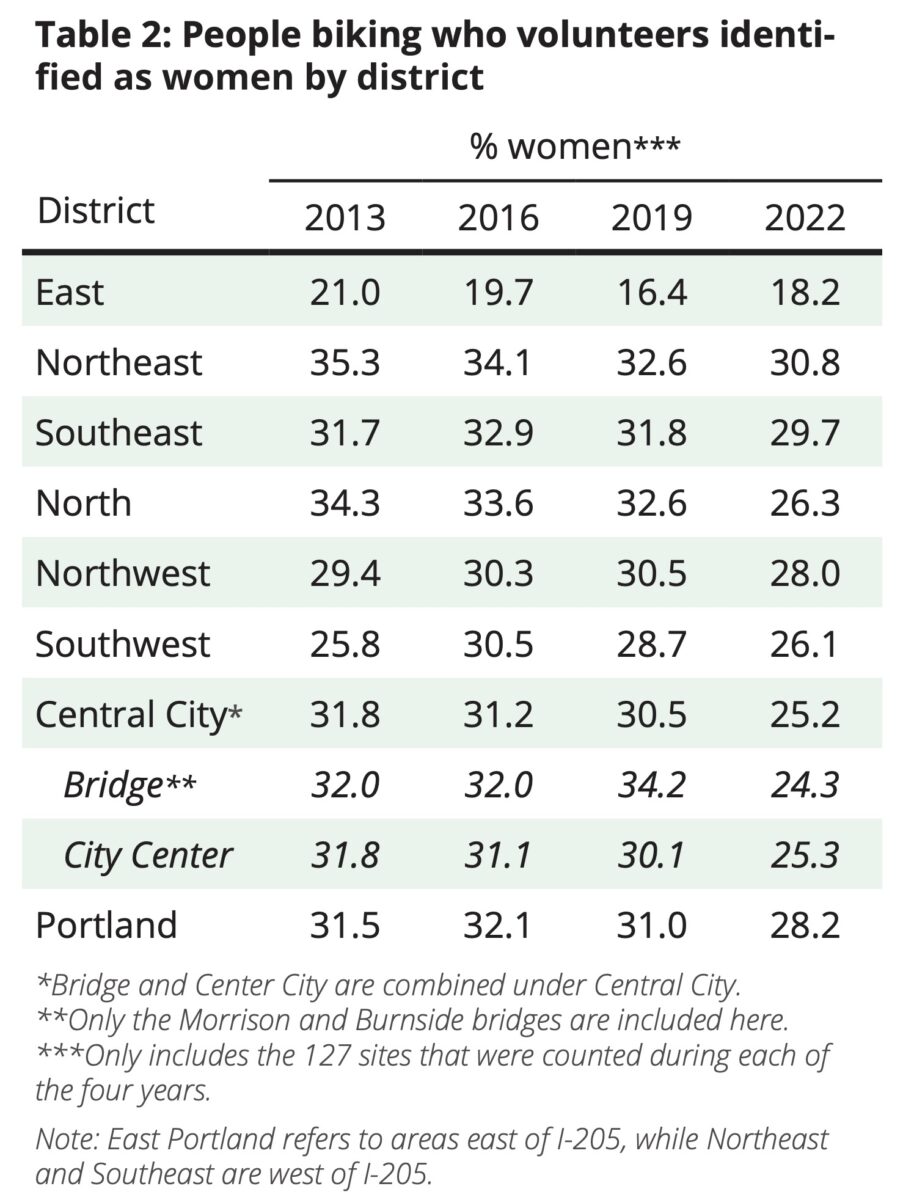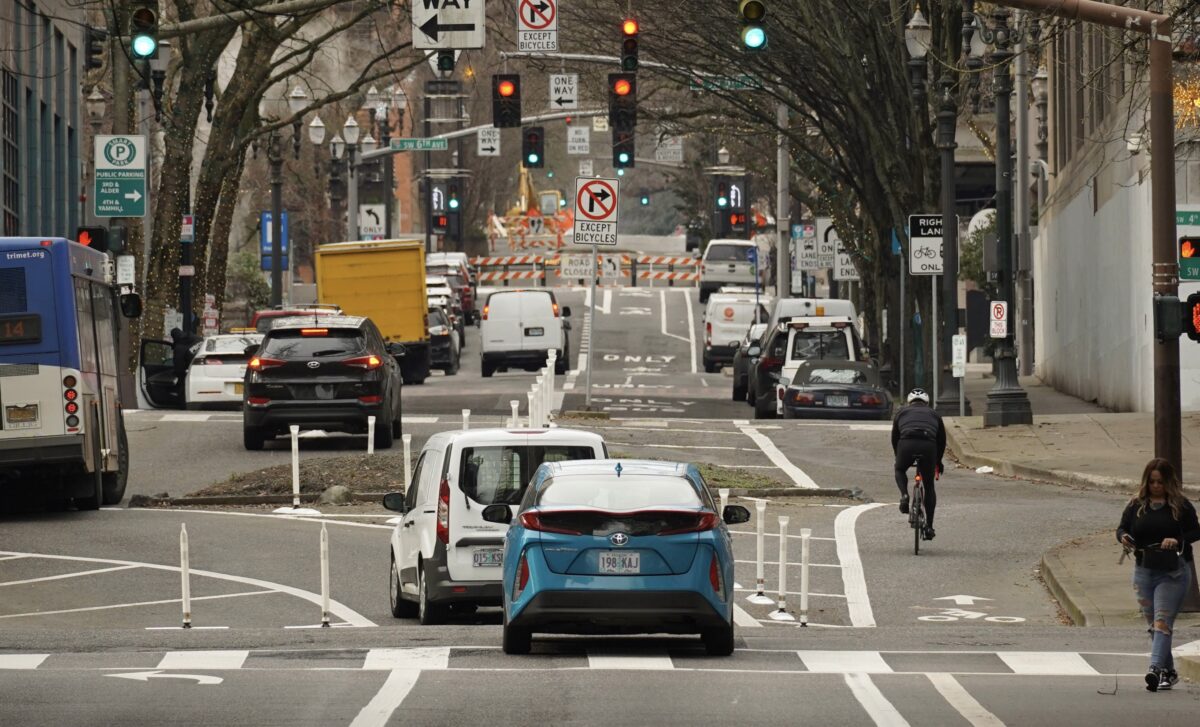
It’s no secret that bicycle ridership in Portland has decreased in recent years; but just how much was anyone’s guess. Thankfully the Portland Bureau of Transportation just released their first bicycle count report since 2014.
The good news is we now have more data to help us understand cycling trends in the city. The bad news is, based on PBOT’s 2022 counts, biking in Portland has dropped back to levels not seen since 2006. “That a decline is occurring in both numbers of people bicycling and in mode split is undeniable. Why it is happening is difficult to determine,” states the report.
To get their numbers, PBOT relied on a tried-and-true method they’ve used for about three decades: an army of volunteers with clipboards who count every bicycle rider they see at hundreds of locations citywide over a two-hour period. They then extrapolate those counts to come up with a daily traffic number. In addition to these 105 volunteer counts (at 234 locations), PBOT used automated counts from fixed pneumatic hoses at 74 locations. The final ingredient are commute-to-work survey data collected by the U.S. Census.
Instead of sharing a raw number from their 2022 count, PBOT has decided to compare the data of three, four-year time periods: 2013 to 2016, 2016 to 2019, and 2019 to 2022. Those three periods take us from our plateau (0.5% increase), the beginning of the downward decline (10% decrease citywide), and then the cliff of the final period when PBOT says bicycling dropped by 34.9% between 2019 and 2022.
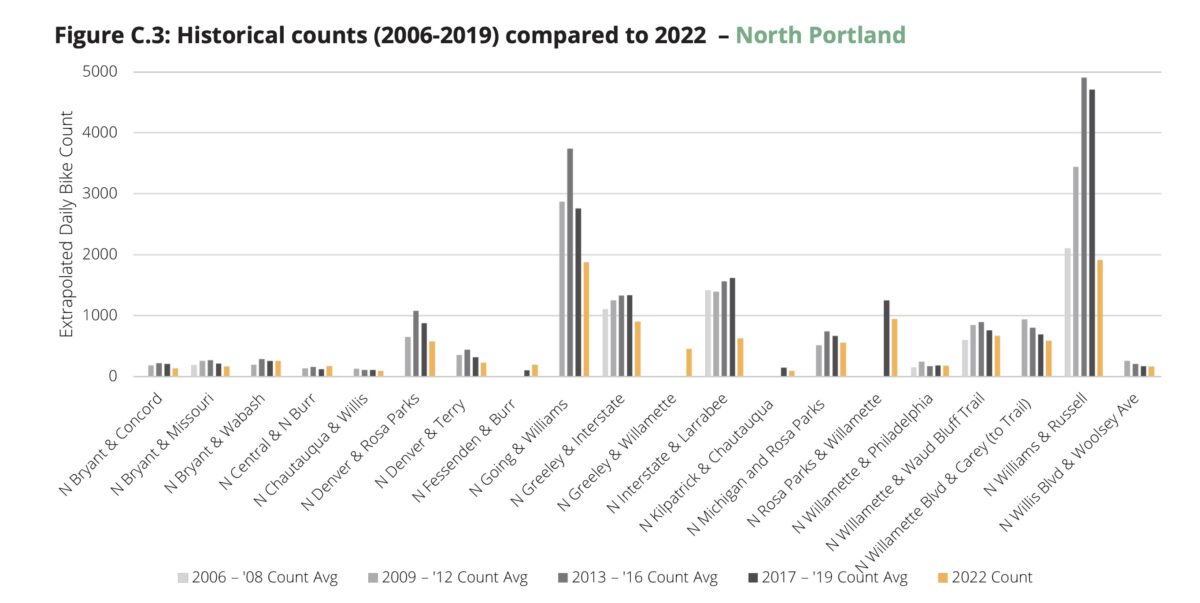
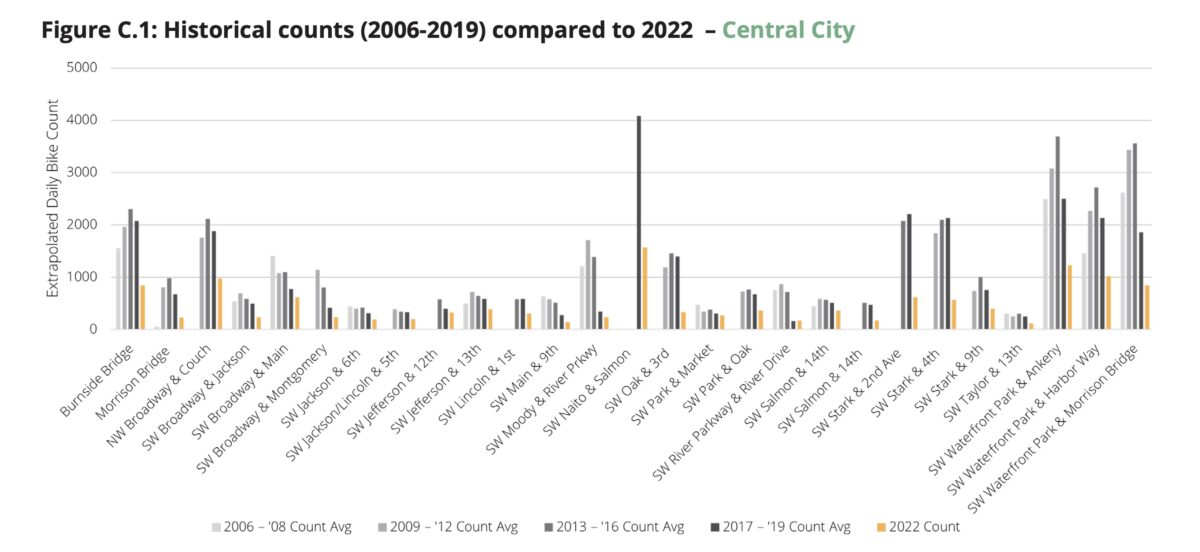
To put a finer point on the decline since 2019, just nine years ago (in 2013) PBOT says there were 3,478 people riding bikes in the central city. During the counts last summer, there were just 1,122 people on bikes — a 45.9% drop. Across 184 count locations, PBOT tallied 17,579 people biking in 2022, a 37% drop from the 27,782 counted at the same locations in 2019.
According to the Census, Portland’s bike-to-work percentage plummeted to just 2.8% in 2021 — down by almost half from the 5.4% in 2020 and well off our nation-leading peak of 7.2% in 2014. That Census number has long been criticized because it focuses only on the work trip and the lack of trust in the Census more broadly in recent years makes its data even more suspect. But it remains an important tally because of its longevity and its influence on federal funding and policy decisions.
While this news is deflating, at least we’re not alone. All other big U.S. cities have seen similar declines. And even at 2.8% we’re still tops.
The Census numbers also mirror Portland’s own counts, which have shown a steady decline since 2014. So far, PBOT says they have no idea why this is happening.
In the report, PBOT details how they’ve continued to build out the city’s bikeway network (77 of it miles since 2014), the majority of which were either neighborhood greenways, protected bike lanes or off-street paths. Here’s PBOT making their case that the biking drop isn’t because of bad infrastructure:
“It is easy to argue that Portland’s bikeway network is of higher quality and reaches into more parts of the city than in 2014- 2015 when bicycle commute mode split and the number of people biking to work peaked. Despite these efforts, bicycle use—as reflected in both commute data and the city’s annual counts— has continued to drop. The pandemic can explain much of the recent, precipitous drop in biking, but it does not explain the downward trend before 2020.”
The report also breaks the counts down by geographic area, gender, and helmet use.
Not surprising, the area with the lowest average number of riders was east of I-205 and the area with the highest average was southeast Portland. That lack of ridership in east Portland is a huge problem for PBOT — especially since they’ve spent many millions in recent years installing new bike infrastructure. The lack of people using the bikeways just fuels the anti-bike fires and the sooner we get folks on two wheels the better (which is why I’m convinced the answer is to drop 1,000 or so new Biketown bikes east of I-205).
Perhaps building on the case that public safety concerns are top-of-mind for many people when it comes their choice to ride a bike, the counts revealed the first significant drop in 13 years in the number of riders who were identified as women. Just 28% of bike riders counted citywide were identified as women, down from the usual 31-32%. Volunteers counted the fewest riders marked down as women, 18%, and the lowest rate of helmet use, 56%, in east Portland.
To build back Portland’s once-vaunted base of bike riders will take time and a concentrated effort to change the narrative (and the reality) about safety. As I shared yesterday in our annual accounting of traffic deaths, the vulnerability felt by all bike riders when it comes to their personal safety can easily trump any good news about new infrastructure. Things like incentives and public events to build community were at the foundation of Portland’s rise as a cycling capitol and we’d be smart to keep those going as well.
One interesting thing I noticed recently in looking at traffic fatality data is that when more people biked in Portland, a lot fewer people died. Just 20 people died while using Portland roads in 2008 when our bicycling rates made a massive leap. And the recent rise in traffic fatalities began in 2014, the same year Portland’s bicycling rates began to fall.
Learn more about PBOT’s bike counts on their website and download a PDF of the 2022 Bike Count Report here.

